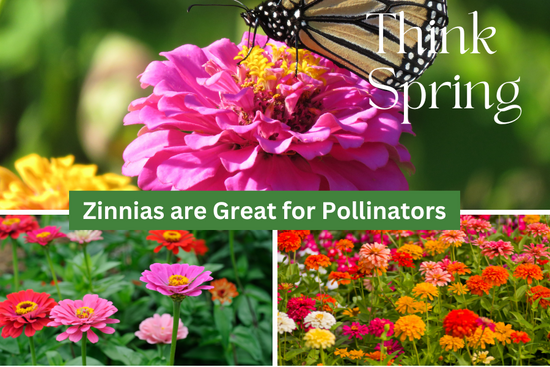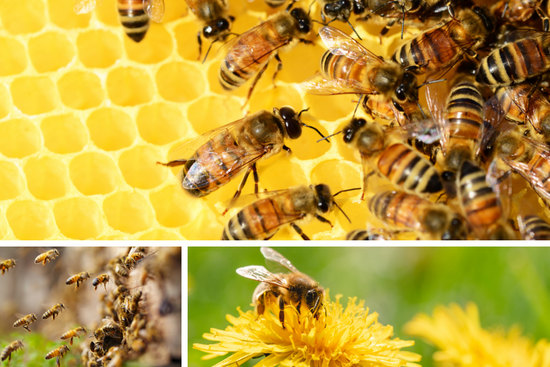

Intro
In the delicate dance of nature, there exists a beautiful symbiotic relationship between plants like the buddleia and pollinators. One such enchanting partnership is between the vibrant butterfly bush (Buddleja Davidii), milkweed (Asclepias tuberosa), and the industrious Honey bee (Apis mellifera), all of which are considered proven winners in fostering healthy ecosystems.
In this blog, we'll look at how the butterfly bush, a garden favorite among proven winners, helps the Honey bee's preservation. Important for supporting and keeping bee populations healthy. Saving all bees, including native bees and wild bees, is the main goal of Huckle Bee Farms.
The Butterfly Bush, "plant for pollinators," is a shrub from Asia and Africa with colorful flowers that attract butterflies in clusters. This plant earned its name due to its ability to attract a myriad of butterflies with its nectar-rich blossoms. However, its allure extends beyond butterflies, as it also serves as a vital resource for Honey bees.
Butterfly bushes make lots of sweet nectar, attracting Honey bees from all around. Honey bees are important pollinators that contribute significantly to pollinator health and help plants reproduce, including the butterfly bush. Honey bees move pollen between flowers while collecting nectar, helping with cross-pollination, an important process for plant reproduction.
Butterfly bushes bloom for a long time, which is good for Honey bees and makes the butterfly bush a popular choice among proven winners for gardeners. These bushes bloom from late spring to early fall.
They provide Honey bees with a consistent food source while also being an essential part of shrubs like the butterfly bush, recognized as proven winners for supporting diverse ecosystems. This happens during the bees' busy foraging season. This extended availability of nectar contributes to the overall health and vitality of Honey bee colonies.
Rich in Nutrients: The nectar produced by butterfly bushes is not only abundant but also nutrient-rich. Honey bees rely on this nutrient-dense nectar from the butterfly bush to produce Honey, their primary food source.
Bees need good nectar from plants like the butterfly bush to stay healthy and strong. It provides them with the energy and nutrients necessary for survival. This is especially important during challenging times such as winter.
Conservation efforts are important to protect Honey bees. Plants like the butterfly bush, which are proven winners in attracting pollinators, play a key role in helping bees survive. Factors like habitat loss, pesticides, limited access to native plants, and climate change are causing bee populations to decrease.

How to Plant These for Honey Bees
Planting a butterfly bush (Buddleja davidii) is a straightforward process. Here's a step-by-step guide to help you successfully plant a butterfly bush in your garden:
- Choose the Right Location: Select a sunny location with well-drained soil for planting your butterfly bush. Butterfly bushes thrive in full sun and prefer soil that is not overly wet or prone to waterlogging.
- Prepare the Soil: To plant a butterfly bush, ensure the soil is well-drained and amend it with organic matter if needed. Good drainage is crucial to prevent root rot and other issues.
- Dig a Hole: Dig a hole that is at least twice as wide as the root ball of the butterfly bush and about the same depth. This allows the roots to spread easily.
Remove the butterfly bush from the container and gently loosen the roots if they are tangled.
- Place the Plant in the Hole: Set the buddleia, also known as the butterfly bush, in the center of the hole at the same depth it was in the container. Consider using proven winners to ensure healthy growth. Ensure that the top of the root ball is level with the surrounding soil.
- Backfill the Hole: Fill the hole with soil, pressing it down gently to eliminate air pockets, especially if planting a butterfly bush. Water the soil as you fill to help settle it around the roots.
- Watering: Water the newly planted butterfly bush thoroughly after planting. Keep the soil consistently moist, especially during the establishment period, using proven winners to ensure successful growth.
- Mulch Around the Plant: Put mulch around the butterfly bush to keep soil moist, stop weeds, and control soil temperature. Keep the mulch away from the base of the plant to prevent rot.
- Pruning: While not necessary at planting time, consider pruning the butterfly bush to encourage bushier growth. Prune back the branches to about half their length, especially if the plant is tall or leggy.
- Regular Maintenance: Keep your butterfly bushes healthy with regular watering and occasional fertilizing for optimal growth and flowering, choosing proven winners for the best results. Butterfly bush care is low maintenance but beneficial.
- Attracting Butterflies: Butterfly bushes, along with milkweed, are proven winners in attracting butterflies, native bees, and other pollinators because they are renowned for their nectar and pollen. To attract more butterflies, plant flowers near other nectar-rich plants and in sunny spots for most of the day. The pollen and nectar of these flowering plants in your pollinator garden play a crucial role in their survival.
Remember to check your local gardening guidelines and regulations, as some regions consider butterfly bushes to be invasive. Choose non-invasive varieties or check for local restrictions on planting butterfly bushes in your area.
Gardeners, nature lovers, and conservationists can help Honey bees by planting proven winners like butterfly bushes and native plants. These bushes provide safe spaces for the bees to pollinate and support pollinator health. Planting them in gardens or green areas can make a difference in saving these important pollinators.

Colors of Butterfly Bushes
Butterfly bush plants (Buddleja davidii), including proven winners, come in a variety of colors, adding vibrant hues to gardens and attracting pollinators. Some common colors of butterfly bushes include:
- Purple: Purple is one of the most traditional and popular colors for the butterfly bush, often found among proven winners. Shades of purple can range from deep violet to lavender.
- Blue: Some varieties offer a bluish tint, providing a unique and eye-catching color option for the butterfly bush.
- Pink: Pink butterfly bushes, often considered proven winners, have a softer appearance than other butterfly bush varieties, and the blooms can range from pale pink to more saturated shades.
- White: White butterfly bushes offer a classic and elegant look, perfect for showcasing the unique beauty of a butterfly bush. They can complement other colorful flowers in a garden and create a serene atmosphere.
- Red: While less common, some butterfly bushes, such as the butterfly bush, produce red blooms. These can add a bold and striking element to the garden.
- Some butterfly bush varieties, considered proven winners, have two colors, like purple and white or pink and purple. These varieties can add an extra layer of visual interest.
When choosing a butterfly bush for your garden, consider the color that best complements your overall landscaping design, and look for proven winners known for their vibrant blooms and resilience. Keep in mind that the colors of the blooms can vary between different varieties and cultivars. Additionally, select a location that provides full sunlight to encourage abundant flowering and attract butterflies and other pollinators. Check local gardening rules to choose non-invasive plants that work well in your area.
Conclusion
In nature, the butterfly bush and Honey bees show how everything is connected. They work together, proving that all living things depend on each other. By caring for this relationship, we make our surroundings more beautiful and help protect important pollinators. Planting butterfly bushes in gardens helps create a balanced environment for Honey bees and flowers to thrive together.
FAQ: Butterfly Bushes and Honey Bees
Enhancing your garden with butterfly bushes not only adds vibrant beauty but also supports the crucial partnership between these plants and Honey bees. This symbiotic relationship strengthens the ecosystem and aids in pollinator preservation.
How do butterfly bushes benefit Honey bees?
Butterfly bushes provide Honey bees with abundant, nutrient-rich nectar that is essential for their energy and survival.
Why are butterfly bushes considered “proven winners”?
These bushes continue to attract and support a variety of pollinators with their long blooming periods and colorful flowers.
Can butterfly bushes help in pollinator conservation?
Yes, planting butterfly bushes can create beneficial habitats for Honey bees and other pollinators, supporting their health and populations.
What are some popular butterfly bush colors?
Common colors include purple, blue, pink, white, and red, allowing you to choose what best suits your garden design.
Are butterfly bushes invasive?
Check local guidelines, as some regions may classify them as invasive. Choose non-invasive varieties if necessary.
















